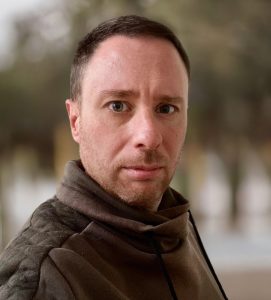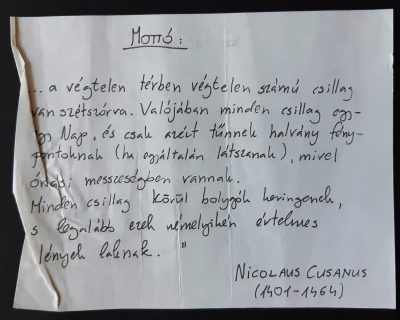
There are infinite number of stars spread through infinite space; that all the stars were actually suns, but seemed to beonly faint dots of light (when they could be seen at all) only because they were at enormous distances; that around all the stars were planets, at least some of whichwere inhabited by intelligent beings.
Nicholas of Cusa (1401-1464)

